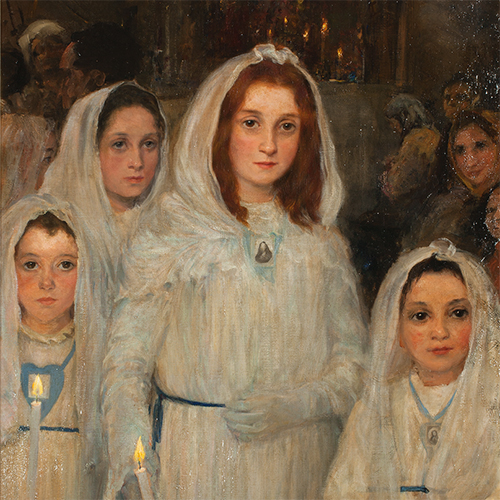Recognizing Artist and Subject: Bramine Hubrecht and her Sicilian Procession
DOI:
https://doi.org/10.52476/trb.9689Abstract
In this contribution the author goes deeper into the life, the oeuvre and the network of the all but forgotten artist Bramine Hubrecht (1855-1913). At the centre is one of her paintings – four veiled young girls entirely dressed in white in a church interior. This work is now in Museum Catharijneconvent. The painting was previously attributed to Isaac Israels (1865-1934) on the basis of two false signatures. New information has meant that it can now be identified as a work by the painter Bramine Hubrecht. One of her sketchbooks in the Rijksmuseum and a watercolour in the Pulchri Cabinet, a unique artists’ initiative in The Hague, helped in unravelling the story. These two works, which show exactly the same girls, can be
attributed to Hubrecht with absolute certainty. New biographical information has reinforced this new attribution and also sheds light on the meaning of the subject. These ‘brides’ prove to be part of the Processione dei Misteri del Venerdì Santo,
which is still held every year on the evening of Good Friday in Taormina, the little village in Sicily where Hubrecht lived at the beginning of the twentieth century. The new attribution has also prompted research into Hubrecht’s life and works – research which has not been carried out until now.
Downloads







